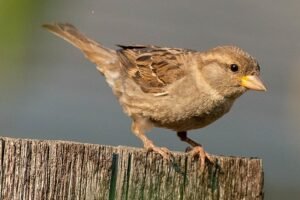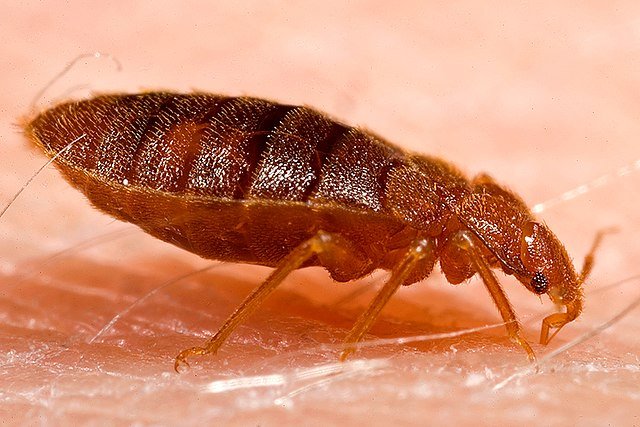House Sparrows (Passer domesticus): Identification, Biology, Risks, and Control
 The House Sparrow (Passer domesticus) is one of the most widespread and recognizable birds on Earth. Originally native to Eurasia and North Africa, this small passerine has been intentionally and accidentally introduced to nearly every continent. Its ability to adapt to human environments—urban centers, farms, and suburban neighborhoods—has made it a classic example of a synanthropic species: one that thrives because of human activity.
The House Sparrow (Passer domesticus) is one of the most widespread and recognizable birds on Earth. Originally native to Eurasia and North Africa, this small passerine has been intentionally and accidentally introduced to nearly every continent. Its ability to adapt to human environments—urban centers, farms, and suburban neighborhoods—has made it a classic example of a synanthropic species: one that thrives because of human activity.
While many admire its chirping and familiarity, the House Sparrow has also become notorious as an invasive bird. It competes with native species, damages crops, and contaminates food-processing areas with droppings. Much like Pigeons (Columba livia), sparrows straddle a fine line between being a beloved urban presence and a persistent nuisance pest.
This article provides a comprehensive overview of their identification, biology, risks, and control, while also exploring their cultural symbolism and ecological significance.
Identification
Scientific name: Passer domesticus
English name: House Sparrow
Family: Passeridae
Physical Characteristics
Size: 14–18 cm (5.5–7 inches) in length
Wingspan: 19–25 cm (7.5–10 inches)
Weight: 24–40 grams (0.85–1.4 ounces)
Plumage:
Males: Gray crown, chestnut nape, black bib, and streaked brown back.
Females: More subdued brown and gray with no bib.
Beak: Stout and conical, ideal for cracking seeds.
Song: Simple chirps and repetitive cheeps, often forming communal “choruses.”
Field identification is straightforward due to their association with human settlements and constant vocalizations.
Biology and Ecology
Diet
House Sparrows are opportunistic feeders. Their diet consists primarily of seeds and grains, but they readily consume food scraps, insects, and even larvae. In urban areas, they are often seen scavenging near restaurants, markets, and food warehouses. They are known to feed on Fruit flies (Drosophila spp.) and other small invertebrates during the breeding season when chicks require protein.
Reproduction
Nesting sites: Holes in walls, roof spaces, eaves, nest boxes, and tree cavities.
Eggs: 3–7 per clutch, incubated for 10–14 days.
Chicks: Fledge in about 2 weeks.
Breeding season: Multiple broods per year in warm climates, fewer in colder ones.
Behavior
Highly social, often roosting in large communal groups.
Aggressive toward other small birds, frequently displacing native species.
Adapted to urban noise and activity, showing little fear of humans.
Lifespan
Average lifespan is 3–5 years in the wild, though some individuals can live up to a decade.
Global Distribution
House Sparrows were historically confined to Eurasia and parts of North Africa. However, human-assisted introductions have spread them almost everywhere except Antarctica.
North America: Introduced in New York (1850s); now widespread.
South America: Established populations in Argentina, Chile, and Brazil.
Australia and New Zealand: Thriving, especially in urban centers.
Africa: Native in the north but expanding southward.
They are often considered invasive due to their ability to outcompete native birds for food and nesting sites.
Risks and Damage
Agricultural Impact
House Sparrows feed on grain crops such as wheat, barley, and rice. Large flocks can devastate ripening crops, especially in developing regions.
Food Safety Issues
In food warehouses, mills, and bakeries, sparrow droppings contaminate products. This creates a pathway for pathogens like Salmonella and E. coli, similar to issues caused by Blow flies (Calliphoridae) that transfer bacteria.
Property Damage
Nesting materials can block drainage systems and gutters.
Debris may interfere with ventilation or machinery in factories.
Droppings are acidic, corroding building materials and paint.
Human and Animal Health
Though sparrows are not major disease vectors, they can carry mites, fleas, and parasites. Accumulated droppings support fungal growth, including Histoplasma capsulatum, a cause of histoplasmosis.
Signs of Infestation
Auditory cues: Persistent chirping in roof voids or walls.
Nesting evidence: Grass, feathers, and straw protruding from gaps.
Droppings: Found on ledges, machinery, or near food supplies.
Feather dust and debris: Accumulation in attics or industrial settings.
Control Methods
Physical Exclusion
Bird netting to block access to roof spaces.
Sealing entry points with wire mesh.
Installing spikes on ledges to deter roosting.
Habitat Modification
Removing food sources such as open grain storage.
Managing waste bins in urban environments.
Regular cleaning to remove droppings and nesting debris.
Trapping
Live traps are sometimes used, but sparrows are cautious and trap-shy.
Chemical Repellents
Generally discouraged due to limited effectiveness and ethical considerations.
Advanced Approaches
Integrated Pest Management (IPM)
Combine exclusion, sanitation, and population monitoring.
Control should focus on reducing access to food and nesting opportunities rather than eradication.
Biological Control
Predators such as hawks, owls, and falcons naturally regulate sparrow populations in rural areas. Urban settings often lack these controls, which explains the success of sparrows in cities.
Legal Considerations
In some countries (e.g., the U.S.), House Sparrows are exempt from protective bird laws that safeguard native species. This allows for more flexible control measures.
Cultural and Historical Context
House Sparrows have a long history of association with humans:
Symbolism: In various cultures, sparrows represent simplicity, persistence, or even fertility.
Religious references: Mentioned in the Bible and other texts as symbols of humility.
Folklore: Once considered good luck in some regions, but also linked to poverty and urban decline in others.
Scientific significance: Used in ecological studies as indicators of environmental change, especially in Europe where populations have declined in some areas due to modernization of agriculture.
FAQ: House Sparrows
Q1: Why are House Sparrows considered pests?
Because they damage crops, contaminate food-processing areas, and displace native birds.
Q2: Do House Sparrows spread disease?
They can carry mites, parasites, and pathogens, though they are not as dangerous as other pests like Pigeons (Columba livia) or Blow flies (Calliphoridae).
Q3: How can I tell House Sparrows apart from similar birds?
Males have a black bib and chestnut nape, while females are plain brown. They are chunkier and noisier than finches or warblers.
Q4: Can House Sparrows be controlled humanely?
Yes, through exclusion methods like netting and spikes, as well as by reducing access to food sources.
Q5: Why do House Sparrows thrive in cities?
Their adaptability, tolerance of humans, and use of artificial structures for nesting make them perfectly suited to urban life.
Q6: Are House Sparrows endangered anywhere?
Paradoxically, while invasive in many countries, their populations have declined in parts of Western Europe due to habitat loss and changes in farming practices.
Final Thoughts
The House Sparrow (Passer domesticus) is one of humanity’s most enduring avian companions. From bustling European capitals to small villages in Asia and farms across North and South America, these birds have woven themselves into our daily environments. Yet, their ubiquity comes with complications.
On the one hand, sparrows serve as opportunistic scavengers and sometimes assist in controlling insect populations, including Fruit flies (Drosophila spp.) during the breeding season. On the other hand, their droppings, nesting habits, and aggressive competition for resources make them a significant nuisance in urban and agricultural settings.
Unlike iconic city birds such as Pigeons (Columba livia), sparrows are smaller and often underestimated, but their ability to infiltrate warehouses, grain mills, and food preparation areas places them firmly in the category of pest birds when populations surge.
For professionals and property managers, the best approach is proactive: exclusion, sanitation, and habitat modification. Chemicals or lethal methods often provide only temporary relief. Sustainable management requires an integrated strategy that aligns with local regulations and environmental ethics.
Ultimately, sparrows reflect the double-edged sword of human-wildlife coexistence: they thrive because of us, but controlling them also falls on us.
Disclaimer
This article is for informational purposes only. Pest control laws and approved chemicals vary by country. For best results and legal safety, we strongly recommend contacting a licensed pest control professional in your local area. Always make sure that the pest control technician is properly certified or licensed, depending on your country’s regulations. It’s important to confirm that they only use approved products and apply them exactly as instructed on the product label. In most places in Europe, the UK, or the USA, following label directions is not just best practice—it’s the law.
Author
Nasos Iliopoulos
MSc Agronomist & Certified Pest Control Expert
Scientific Director – Advance Services (Athens, Greece)
Licensed Pest Control Business – Ministry of Rural Development & Food (GR)
References
Wikipedia – House Sparrows
All About Birds – House Sparrow

